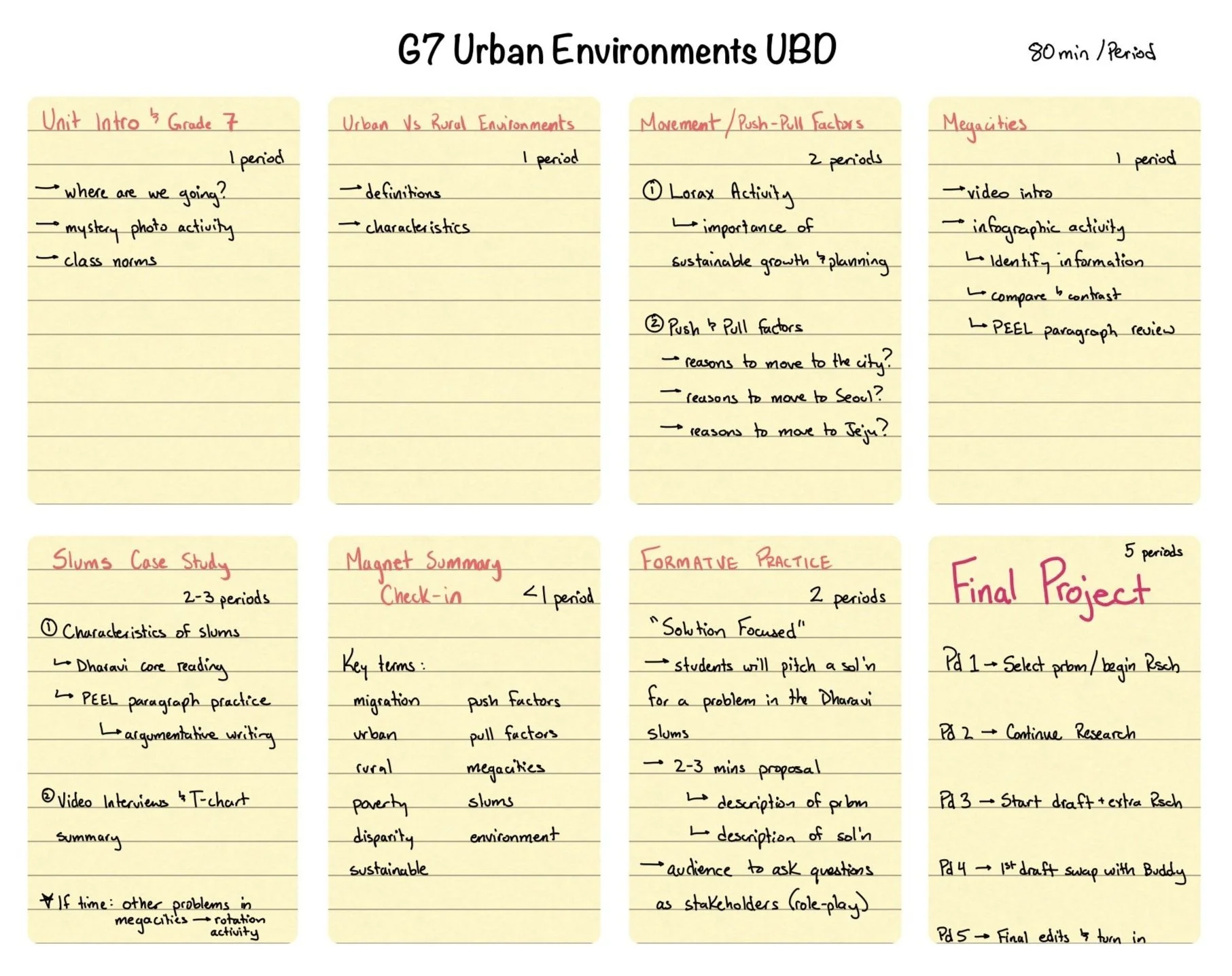G7: Urban Environments Unit Overhaul
It is my second year teaching the grade 7 course at BHA and our department is in the middle of a curriculum review. Previously, we’ve opened the year with a general geography unit that follows the five themes of geography as dictated by American curriculum, and while I appreciate the structure the themes provide, the unit did not inspire awe and enthusiasm. I was ready for a change and as a department we were discussing bringing down more DP themes and topics to our MYP classes.
Back in June, I met with our previous geographer to get a better idea on the possible subjects we could pursue and I even borrowed one of the DP textbooks. In our discussion, I kept coming back to this idea of urbanization and the problems found in an urban environment. Most of our students are from Seoul and chances are they will eventually live in Seoul as an adult, or they will live in another megacity. I wanted a unit that would challenge them to think about interactions within their cities (between areas, classes, systems), and an exploration into how some of these systems are set-up and urban problems are addressed. Our key-focus for all of the other grade 7 units is “systems,” and as I got deeper into the brainstorming, I thought that I had found the perfect fit.
Concept ready, I met with my partner teachers to pitch the end goal and final project—there are 3 of us teaching grade 7 this year. In brief, I wanted students to write a 3-part report addressing an urban problem. In part 1, they needed to describe their chosen problem. In part 2, they needed to discuss solutions that are used elsewhere around the world. In part 3, they needed to apply those solutions to their target city. Are the solutions feasible? If you want to build a subway system to help with transit, is it possible in all environments?
Since this was our first unit of the year, we didn’t want it to be a free-for-all research assessment and decided to provide a number of sources for students to use. To help students with part 1, I edited articles (using rewordify to help identify challenging vocabulary) outlining traffic problems in Bangkok and Toronto, or detailing slums in Rio de Janeiro or Makoto. For part 2, we found and categorized a number of articles and videos about possible solutions employed around the world. In hindsight, while it was a good starting point, many of our students wanted to look for other solutions anyway, so we did allow free research later. Images of the assignment sheet are below or find the full google document here.
Final project decided, we next worked at laying out the content and skills that we would need to cover so that our students could accomplish this goal. We knew we needed to introduce the concepts of urbanization, urban migration and megacities and decided to work these into the beginning of the unit. We also wanted to spend time discussing problems in megacities. One of my colleagues mentioned the Dharavi Slums as a prime example, not only because he had video resources on the topic, but also because it was a good example of many urban problems. For skills, we needed our students to feel comfortable using information to describe situations, and then evaluate the merits and drawbacks of a possible solution. At the end of our planning, our rough plan looked like the following, with a projection of 15 class periods of 80 minutes:
As the unit came to an end, I can honestly say that I really enjoyed teaching the content and was overall impressed by the quality of work from the students. Many of my students were fascinated by the slums and I think it was a good decision to use Dharavi as a case study. I also liked providing the option to focus solely on traffic in the summative to give students a choice in exploring a different issue. The only big issue we had was with the option for Makoto in Nigeria. Since the Makoto slums are on water and are so different from our case study, some of the students had difficulty finding and applying solutions that could work. Despite this hiccup, all in all, a successful unit that I would gladly teach again.


